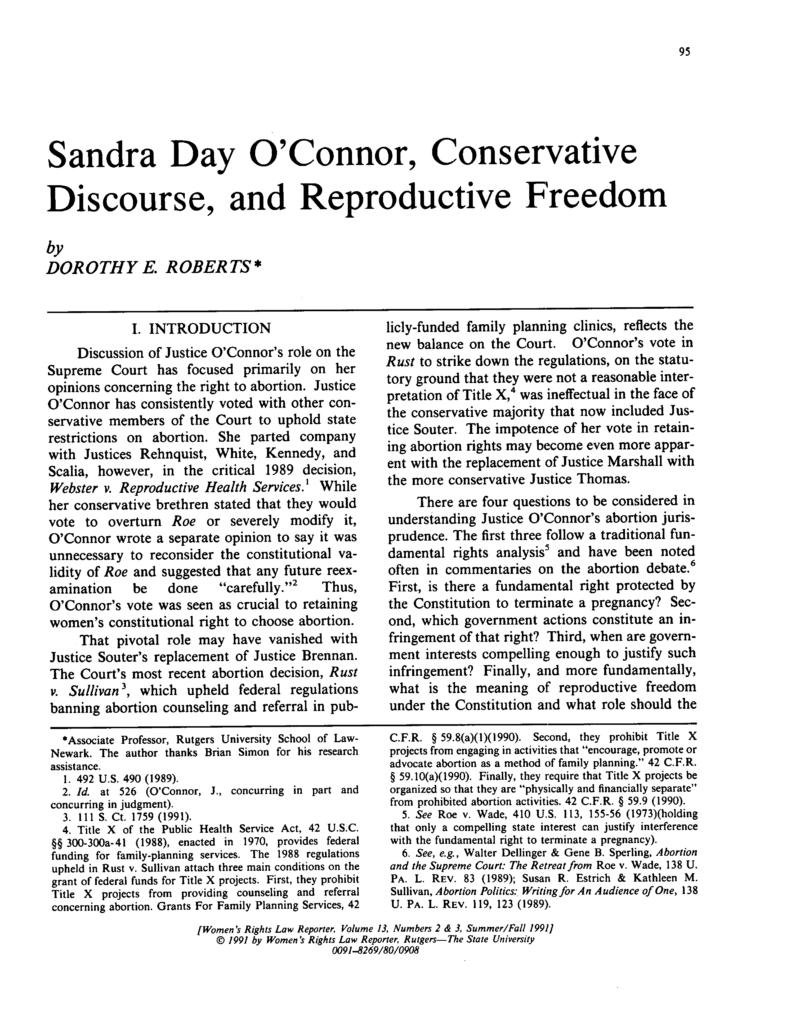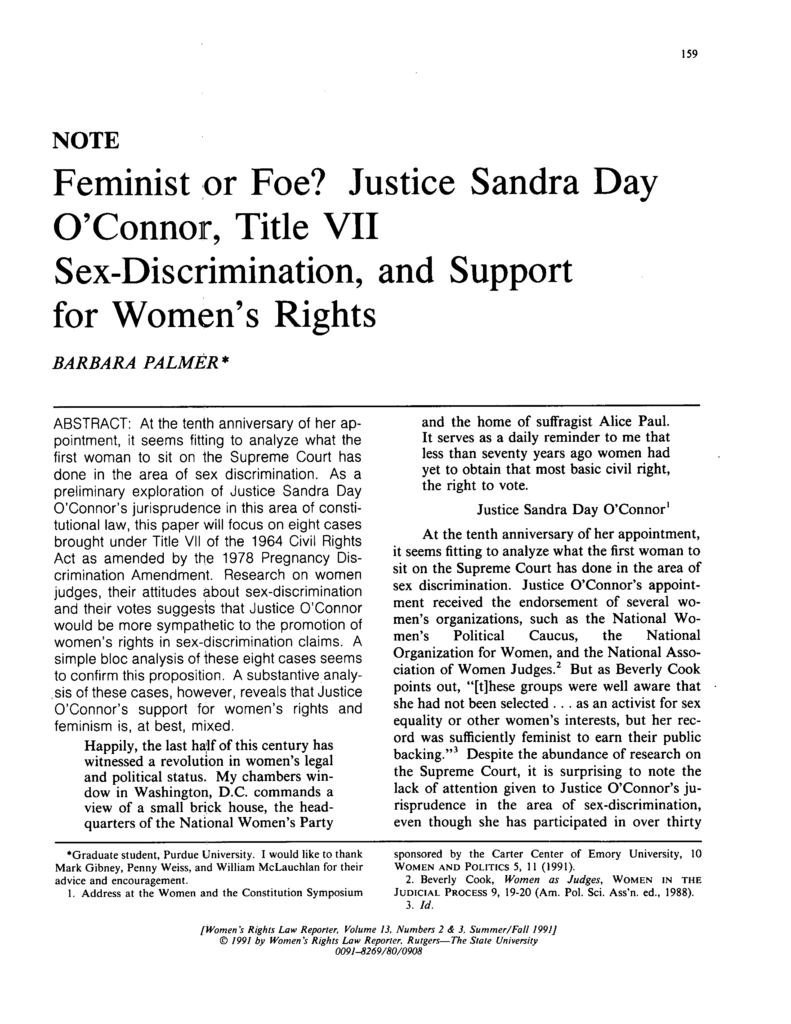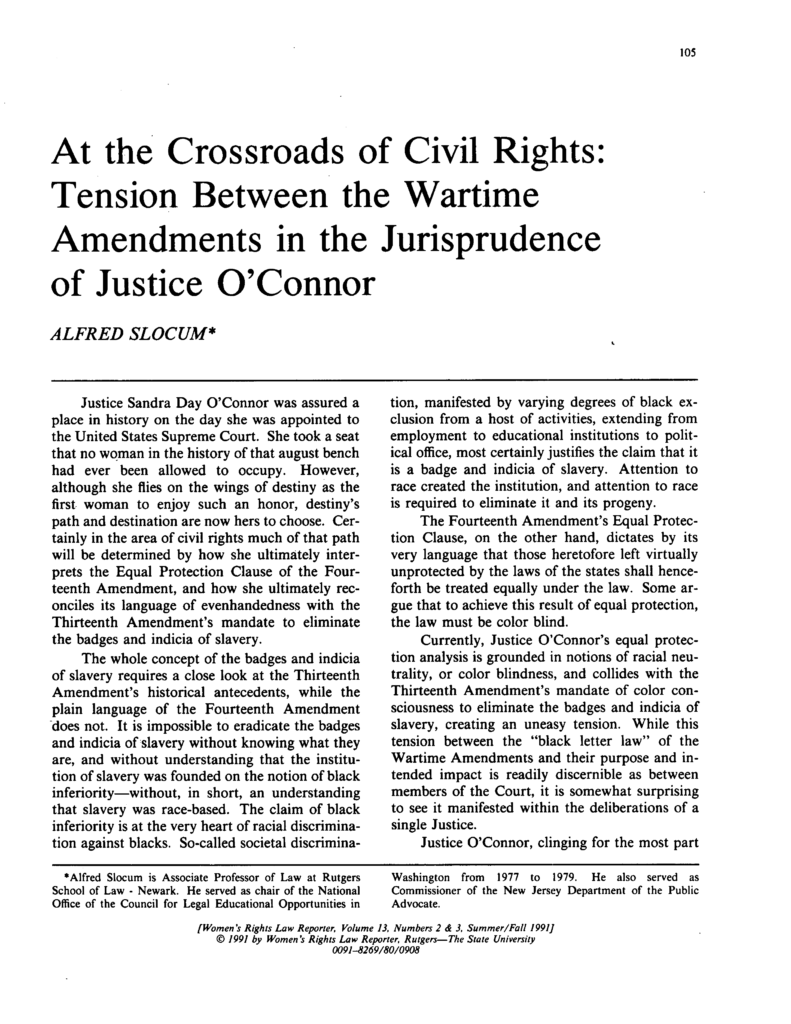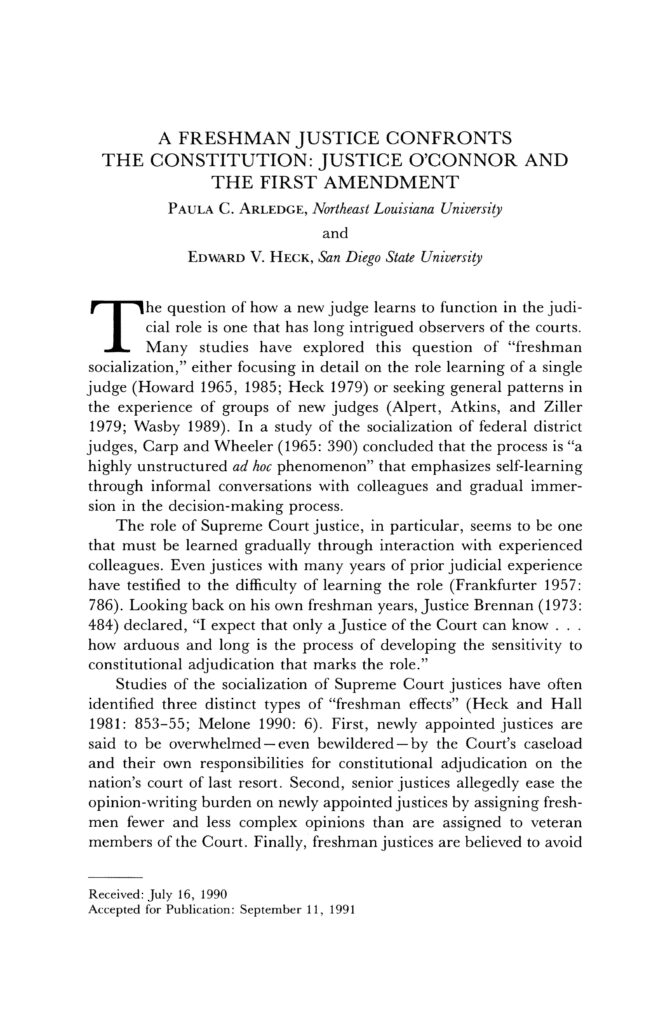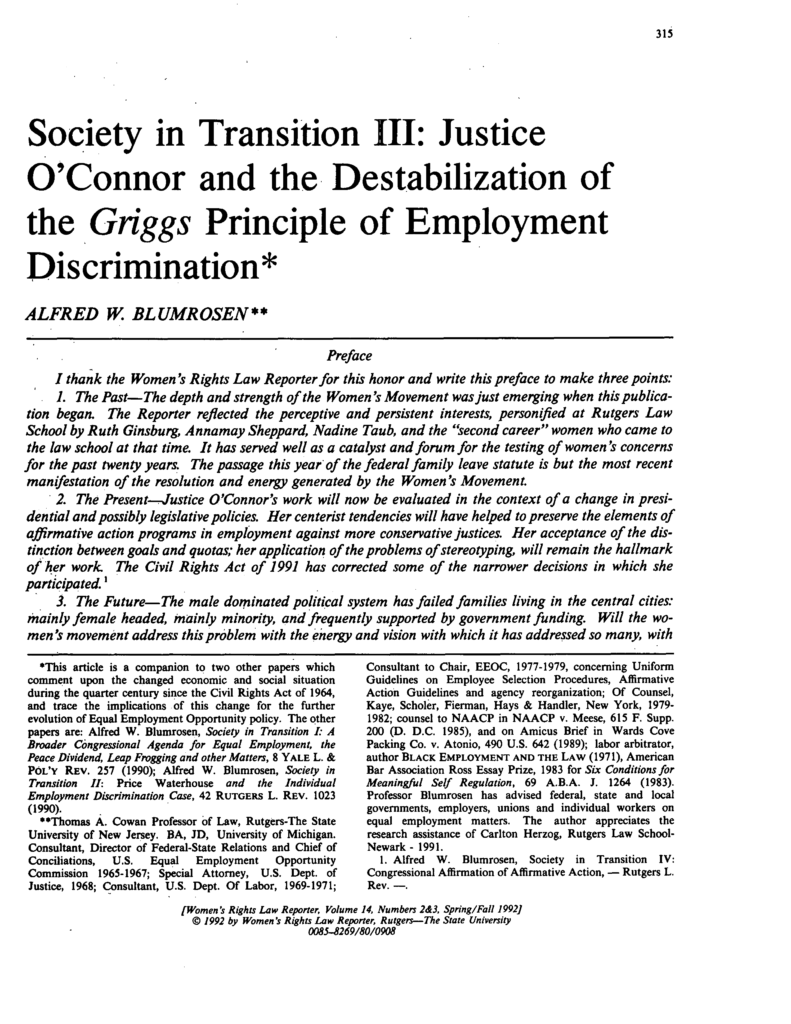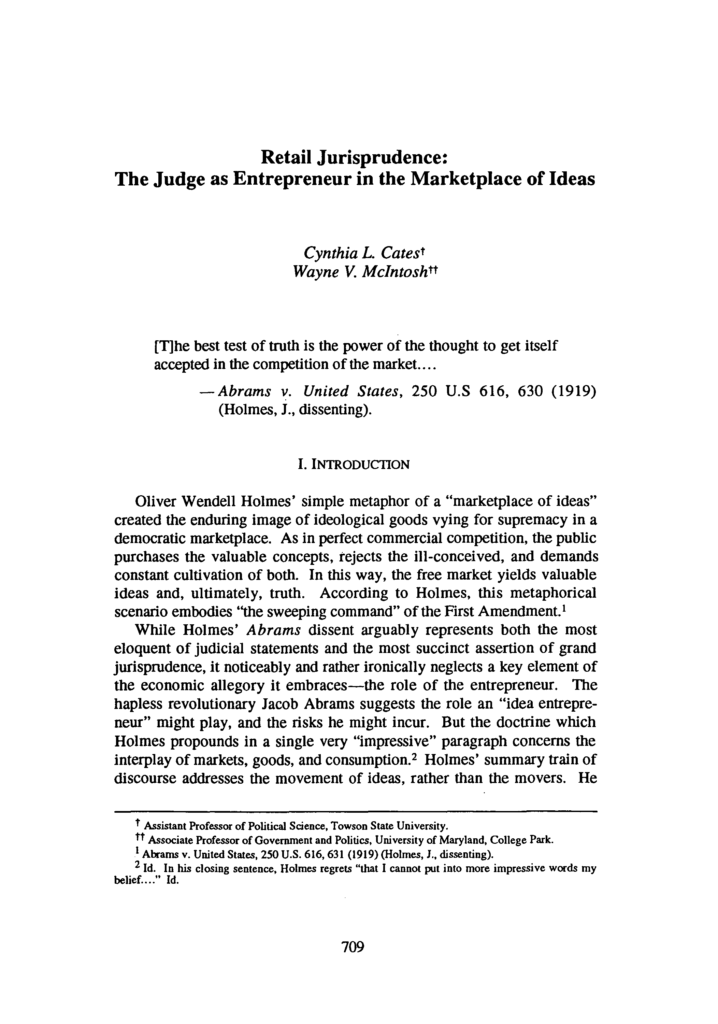Federalism and Separation of Powers on a ‘Conservative’ Court: Currents and Cross-Currents from Justices O’Connor and Scalia
FEDERALISM AND SEPARATION OF POWERS ON A “CONSERVATIVE” COURT: CURRENTS AND CROSS-CURRENTS FROM JUSTICES O’CONNOR AND SCALIA
M. DAVID GELFAND* KEITH WERHAN**
This Essay analyzes the approaches taken during recent Supreme Court Terms by Justices Sandra Day O’Connor and Antonin Scalia to cases involving federalism and separation-of powers issues. These two Justices, who are key actors within the so-called “conservative bloc” on the Court, have been chosen because of their subtle, yet significant, differences respecting these two areas of constitutional law.
After brief biographical sketches of the two Justices, this Essay analyzes recent Supreme Court decisions. In this setting, Justices O’Connor and Scalia are, to some extent, mirror images of each other. Justice Scalia has been especially vocal and aggressive in advocating a formalist approach to separation of powers, while showing much less concern for the protection of federalism values. Justice O’Connor, on the other hand, has championed judicial protection of state and local governments against federal interference, while taking a measured approach to separation issues.
The Essay argues that these differences in the approaches to federalism and separation taken by Justices O’Connor and Scalia are explained, in part, by differences in their backgrounds and methods of constitutional interpretation. In particular, Justice O’Connor seems most comfortable with a contextual approach to these constitutional protections, while


